Why you should swap the crowded French Riviera for Marseille’s lesser-known shores
Nice local Chloe Braithwaite finds respite from the summer crowds of the Cote d'Azur in the sleepy towns that surround France’s oldest city

Your support helps us to tell the story
From reproductive rights to climate change to Big Tech, The Independent is on the ground when the story is developing. Whether it's investigating the financials of Elon Musk's pro-Trump PAC or producing our latest documentary, 'The A Word', which shines a light on the American women fighting for reproductive rights, we know how important it is to parse out the facts from the messaging.
At such a critical moment in US history, we need reporters on the ground. Your donation allows us to keep sending journalists to speak to both sides of the story.
The Independent is trusted by Americans across the entire political spectrum. And unlike many other quality news outlets, we choose not to lock Americans out of our reporting and analysis with paywalls. We believe quality journalism should be available to everyone, paid for by those who can afford it.
Your support makes all the difference.In the peak of summer, Nice, like many of the major towns along the French Riviera, is rather full. Not as full as Paris or Barcelona, but enough that finding a bare patch of pebble along the city’s famous Baie des Anges is just this side of frustrating.
People hustle onto the tram by the city’s Old Town, sweaty bodies cramming into every available space, while visitors from out of town – not realising reservations are essentially obligatory – stand in queues surrounding restaurant terraces, sighing loudly in hopes of pity from the harried wait staff.
As a local, I adore the city year-round; its sunny disposition and famously colourful facades will always be charming to me, but when friends ask when they should stop by, I always say this is a town best visited in spring or autumn, when the promenade is calm(er), and the cafes and bars that line the narrow, labyrinthine streets can spare a seat for me.
However, the lesser-known shores by Marseille are perfect for summer. The trick is in finding those charmingly quiet fishing village-esque towns that are off-radar for many non-French visitors. This sweeping stretch of the Mediterranean feels forgotten, despite attracting a host of creatives and intellectuals over the years, like Virginia Woolf, Edith Wharton, Aldous Huxley and his wife Maria, Bertolt Brecht and Jacques Cousteau.
What is there to do in these tiny towns? Not much, and that’s the point. Whether you’re looking for long, languid mornings or hikes spent chasing the sun along those rough-hewn seaside paths the French call les sentiers du littoral, these tiny towns offer all the charm and wealth of the Riviera without the crowds – or the price tag.
Read more on France travel:
Where to go
La Ciotat
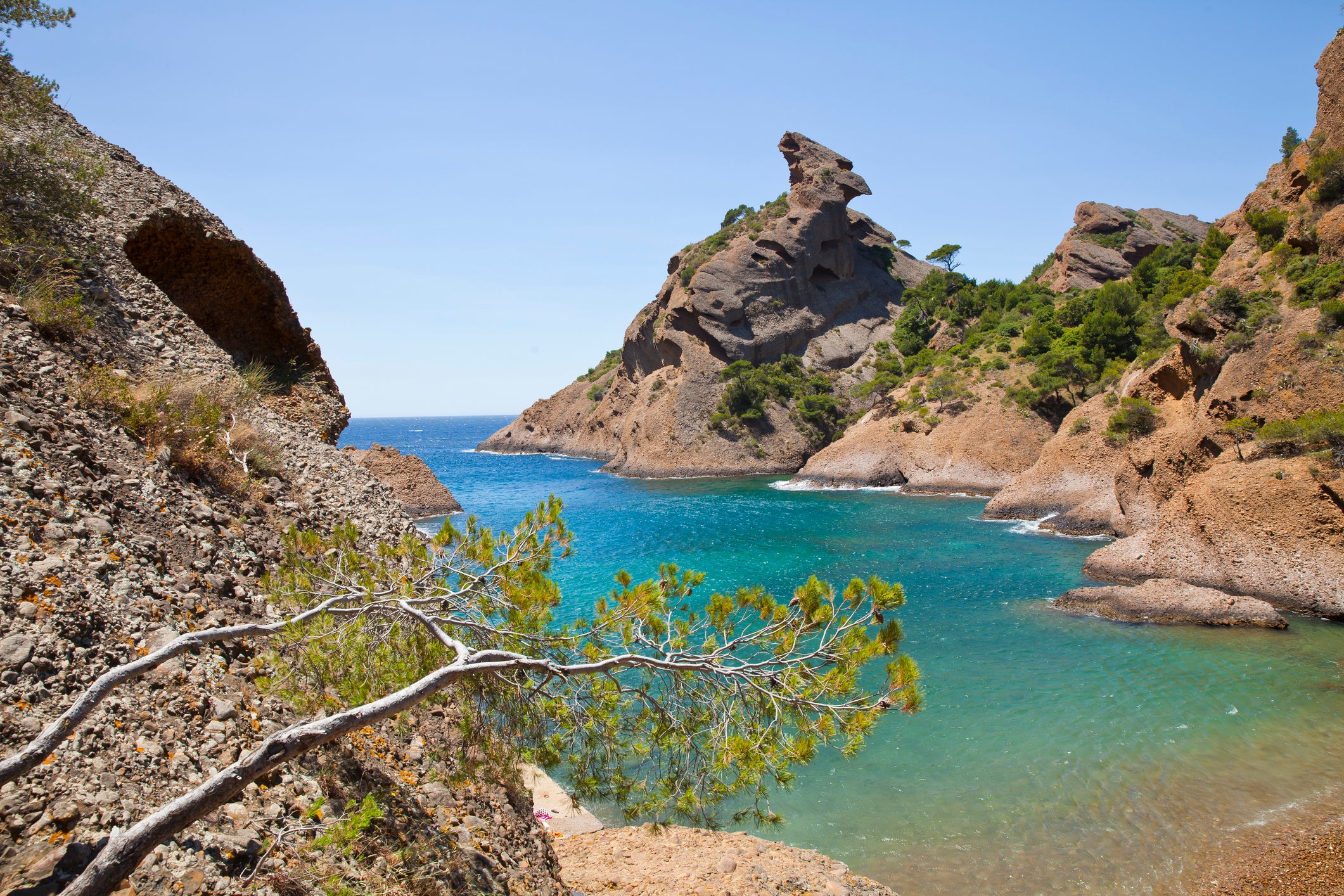
True cinephiles will know of La Ciotat, home to some of the earliest films ever produced by the Lumière brothers. Of the monuments in town dedicated to film, the Eden Theatre is the most impressive as the oldest French cinema still in operation – with its first screening in 1895. Fans of the brothers can even visit their former home, the Château du Clos des Plages – now a private residence and called the Palais Lumière – on certain days of the year. In town, Café de l’Horloge is a historic restaurant with a charming reading corner, while Old Town plays host to boutique shops and local artisans. Outside of film, La Ciotat is also the birthplace of pétanque, France’s unofficial national sport.
The town borders the Calanques National Park, easily distinguishable from the Calanques of Cassis and Marseille by their distinctive red rock formations. Calanques Mugel and Petit Mugel are a short walk from the edge of town, with small beaches nestled between rocky cliffs. A little further west, also accessible by a sentier du littoral, is the less popular Calanque de Figuerolles, overlooked by local institution hotel-restaurant Chez Tania. It’s the perfect Robinson Crusoe-style lookout to watch the sun go down.
Cassis
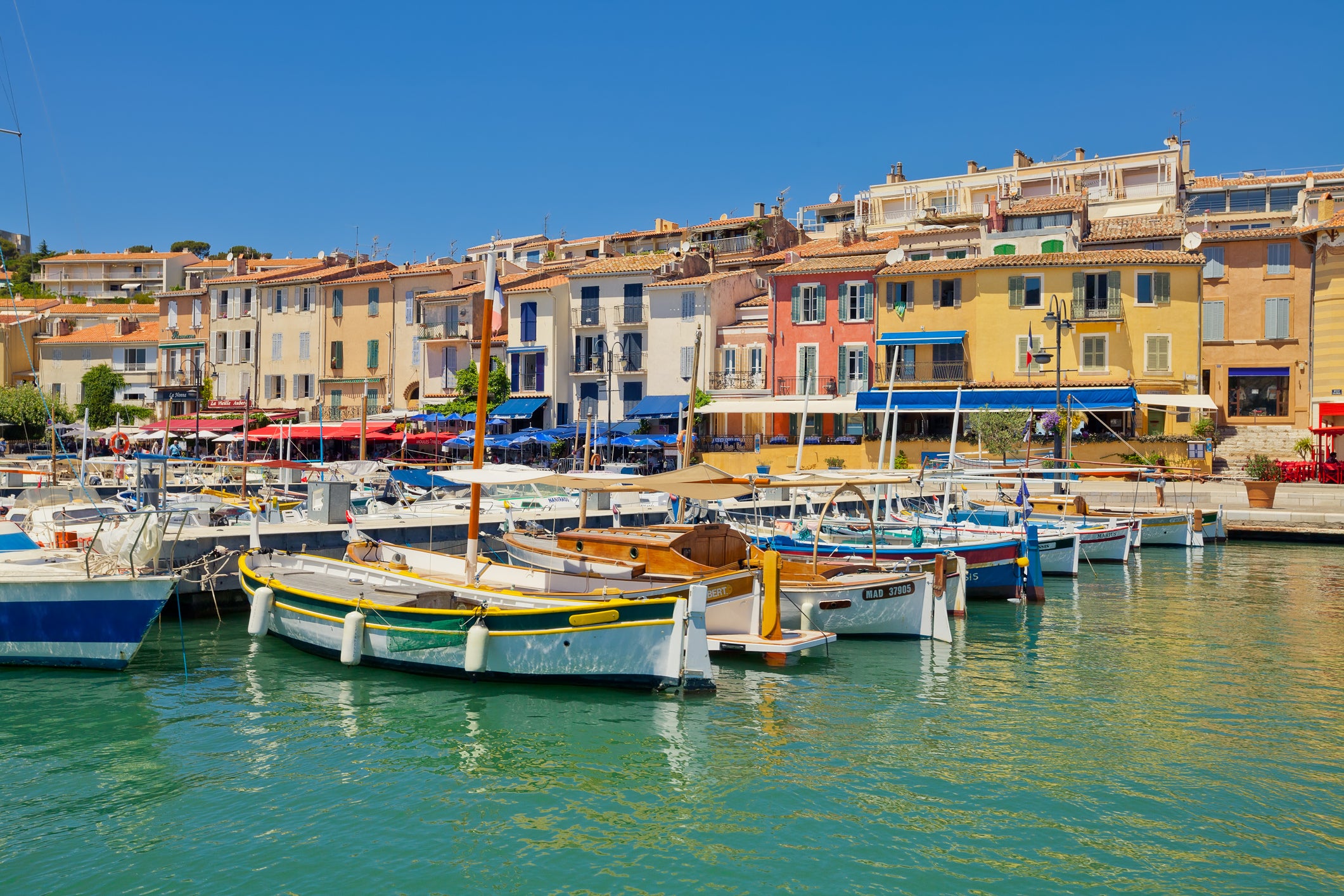
Picture-perfect Cassis is as pretty as a postcard. Not to be confused with the liqueur of the same name, Cassis is often overlooked by visitors in favour of Marseille or Aix-en-Provence. Nestled in a small valley between Cap Canaille and the Calanques, Cassis features the typical colourful facades so well known along the Mediterranean and is a lovely alternative entryway to the Calanques National Park. The obvious attractions are the old town, port, and beaches, but recently, it’s the town’s wine that’s been having a moment.
Wine from Cassis enjoys its own AOC (appellations d’origine contrôlée – a protected product, like champagne), and is often described as delicate and elegant – floral, fruity and a little bit herby – thanks to the terroir called garrigue in southern French: that particular shrubby, limestone soil so common in this part of the country.
Sanary-sur-Mer
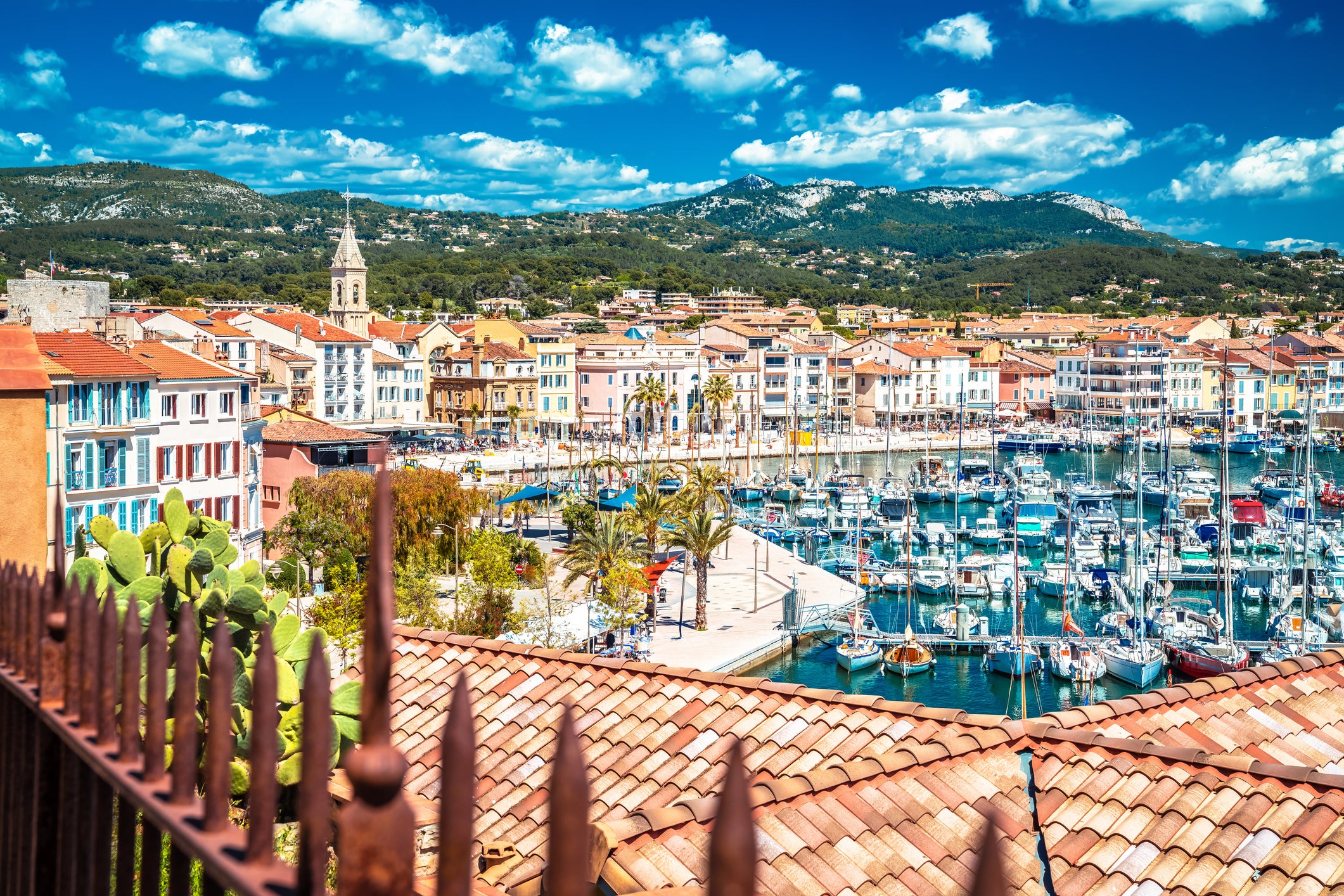
During the Second World War, when the Nazis were stripping anti-Reich intellectuals of their citizenship, the tiny Sanary-sur-Mer played host to a number of influential exiles. Bertolt Brecht, Thomas Mann and Sybille Bedford counted themselves among the locals – as did Huxley, whose home, Villa Huley, where he penned his wildly successful Brave New World in 1931, overlooking the shore. Outside of the literary elite, Cousteau and his friend, Frédéric Dumas, invented and perfected the aqualung, a sort of proto-scuba apparatus.
As such, diving and water sports are popular activities in Sanary-sur-Mer, so while in town visit the Frederic Dumas Museum dedicated to diving. The city’s port is recognised as one of the most typical ports along the Mediterranean, filled with traditional Provençal boats called pointus – a few of which are over a century old. Don’t miss the market each Wednesday.
Bandol
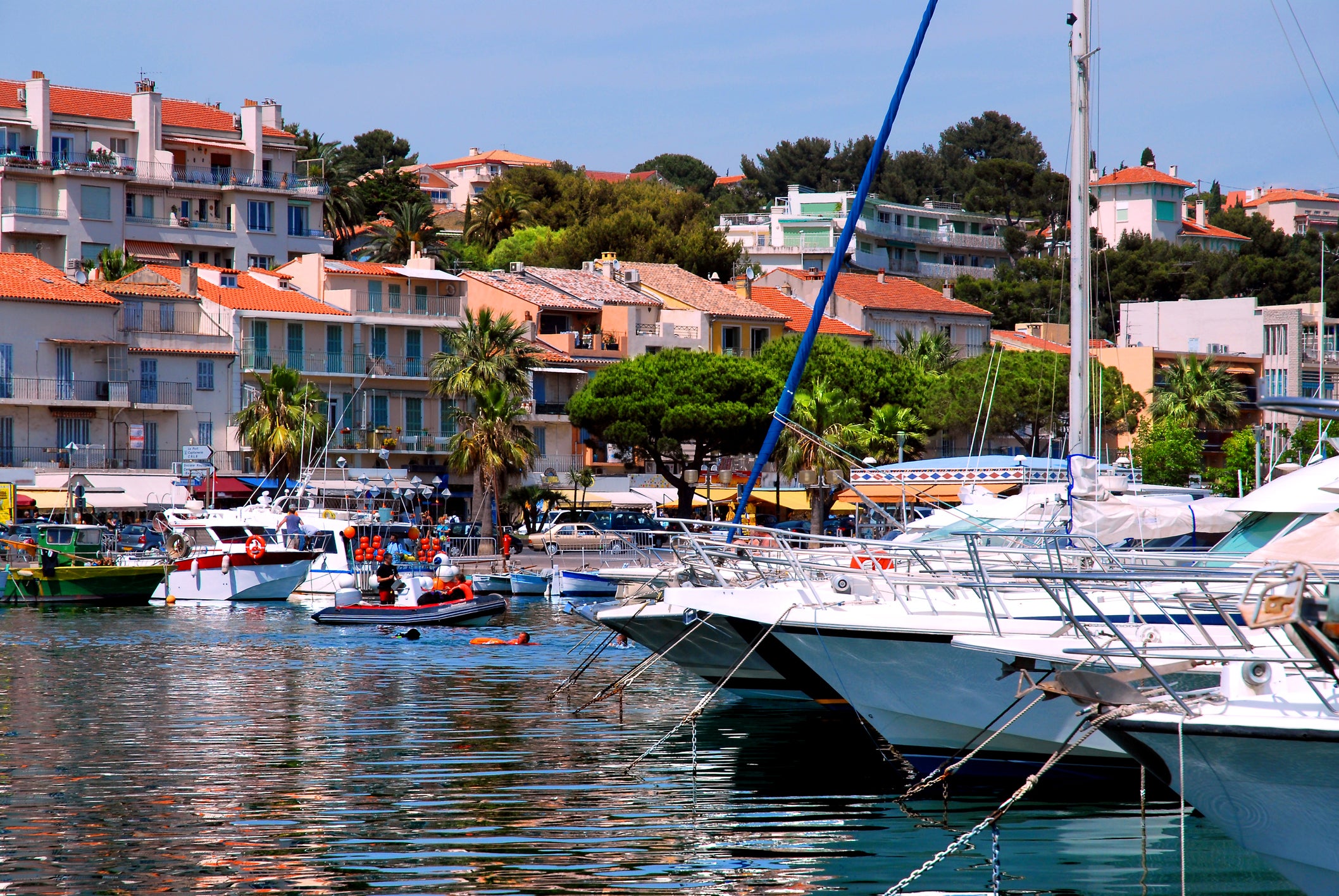
In the early 20th century, Bandol was well known as a seaside resort, playing host to Aldous and Maria Huxley prior to their move to Sanary-sur-Mer, as well as Katherine Mansfield, DH Lawrence, and Thomas Mann. Later, in the 1950s, Marlon Brando was snapped in the port with his then-fiancee, Josanne Mariani-Bérenger, the daughter of a local fisherman. Perhaps they came for the town’s beaches, of which, there are many: Grand Vallat Beach is a favourite among locals with palms and an open horizon, as is Renécros Beach, well sheltered from the harsh winds of the Mistral.
Like Cassis, Bandol also enjoys an AOC for its wines, especially reds and rosés made with the Mourvèdre varietal, a grape said to be difficult to grow. No trip to the town is complete without visiting a few of the nearby vineyards; there are around 60 just outside town. For those without a car, the Bandol Wine Cellar showcases local producers.
Hyères
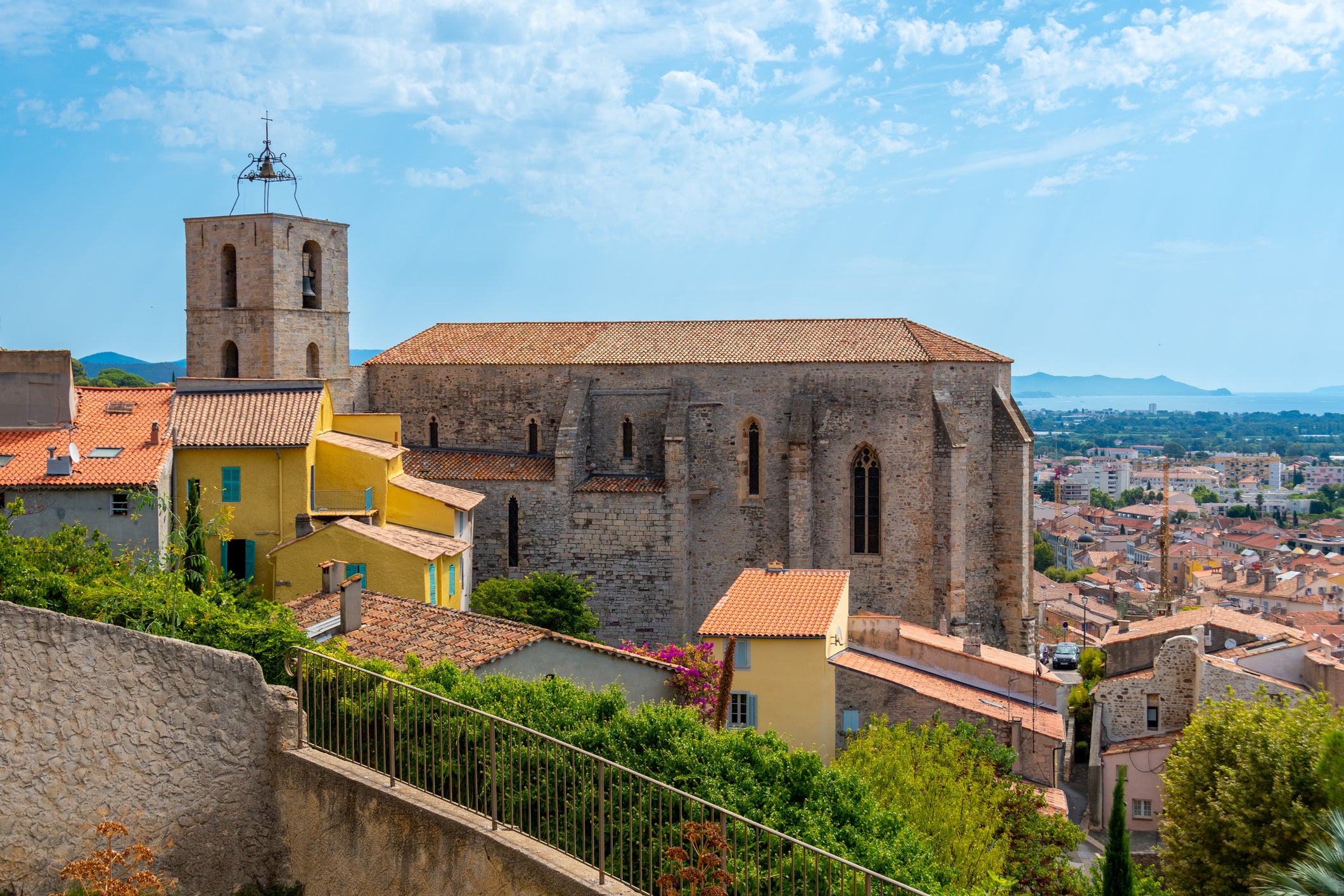
Once one of Queen Victoria’s winter getaways, the medieval village of Hyères also attracted the likes of F Scott Fitzgerald, Picasso, Dalí and Tolstoy over the years. The old town is centred around Place Massillon, where Saint-Blaise Chapel, built by the Knights Templar in the 12th century, dominates the space, surrounded by little cafes. Noailles Villa, a contemporary art gallery and the host of the annual Festival of Fashion, Photography and Accessories, is home to a permanent exhibition of avant-garde artists from the 1920s to the 1960s (think Cocteau, Buñuel, Ray, and – yes –Dalí), while perched on the hill overlooking the city are the ruins of the Hyères Castle, built in the 11th century.
But if Hyères is famous for anything, it’s the wild landscape. Old salt marshes are home to over 300 species of birds (including flamingos), while three islands to the south, called Îles d’Or, or the Golden Islands – comprising Porquerolles, Port-Cros, and Ile du Levant – are accessible via ferry and perfect for hikers and cyclists.
Read more: Why I chose Marseille over Paris for the Olympic Games
Join our commenting forum
Join thought-provoking conversations, follow other Independent readers and see their replies
Comments